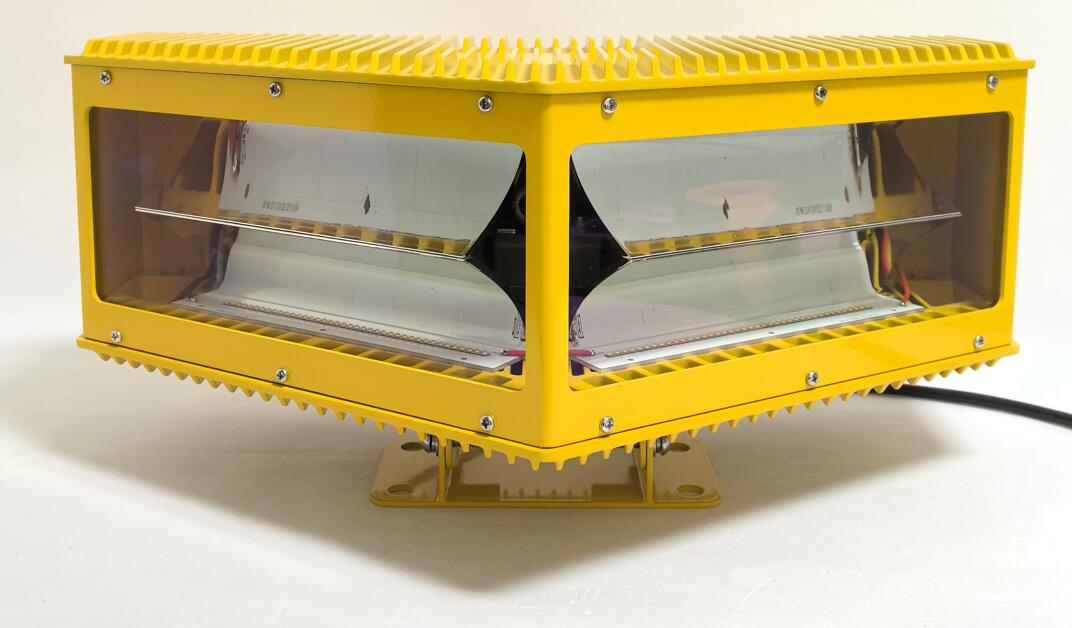In the evolving landscape of aviation safety, the LED aircraft beacon has emerged as the preferred solution for marking tall structures. These advanced lighting systems combine superior visibility with energy efficiency, revolutionizing how we protect aircraft from potential ground obstructions. This article examines the advantages, applications, and technological innovations of LED aircraft beacon systems in modern aviation safety.
The Critical Role of LED Aircraft Beacons
Aviation obstruction lighting serves as a visual warning system for pilots, particularly during nighttime operations or low-visibility conditions. The transition from traditional lighting to LED aircraft beacon technology represents a significant leap forward in safety and reliability:
Enhanced Visibility: LEDs provide brighter, more consistent illumination

Energy Efficiency: Consuming up to 80% less power than incandescent alternatives
Durability: With lifespans exceeding 100,000 hours of operation
| led aircraft beacon |
Instant Activation: No warm-up time required, unlike older technologies
These characteristics make LED aircraft beacon systems ideal for marking communication towers, wind turbines, skyscrapers, and other tall structures that pose potential hazards to air navigation.
Technical Specifications of Modern LED Aircraft Beacons
Contemporary LED aircraft beacon systems are designed to meet strict aviation standards while offering operational advantages:
1. Light Intensity Options
Low-intensity: For structures below 150 feet (45 meters)
Medium-intensity: For structures between 150-500 feet (45-152 meters)
High-intensity: For structures exceeding 500 feet (152 meters)
2. Color Variations
Red beacons: Standard for nighttime obstruction lighting
White strobes: Preferred for daytime visibility on very tall structures
Dual-color systems: Combine both for 24/7 effectiveness
3. Flash Patterns
Synchronized flashing sequences for better recognition
ICAO-compliant flash rates (20-60 flashes per minute)
| led aircraft beacons |
Customizable patterns for specific applications
Regulatory Compliance and Standards
LED aircraft beacon installations must adhere to stringent international guidelines:
1. International Civil Aviation Organization (ICAO)
Annex 14 specifies light intensity and coverage requirements
Defines vertical spacing between multiple beacons on tall structures
2. Federal Aviation Administration (FAA)
AC 150/5345-43J details technical requirements
Specifies photometric performance and durability standards
3. European Aviation Safety Agency (EASA)
CS-ADR-DSN defines European requirements
Includes specific EMI/RFI emission limits
Advantages Over Traditional Lighting Systems
The shift to LED aircraft beacon technology offers numerous benefits:
1. Operational Efficiency
Lower power consumption reduces energy costs
Minimal voltage requirements enable solar-powered applications
Reduced heat generation decreases thermal stress
2. Maintenance Benefits
Extended service life minimizes replacement frequency
Solid-state construction resists vibration damage
Modular designs simplify field repairs
3. Environmental Advantages
Mercury-free construction
Fully recyclable components
Reduced light pollution through precise beam control
Innovations in LED Aircraft Beacon Technology
Recent advancements are enhancing LED aircraft beacon performance:
1. Smart Monitoring Systems
Integrated health monitoring sensors
Remote diagnostics via wireless connectivity
Automated failure alerts to maintenance teams
2. Adaptive Lighting Controls
Light intensity adjustment based on ambient conditions
Synchronization with other nearby beacons
Radar-activated systems for temporary structures
3. Advanced Optical Designs
Precision lenses for optimized light distribution
Glare-reduction technologies
UV-resistant housings for long-term outdoor use
Application Scenarios
LED aircraft beacon systems serve diverse industries:
1. Urban Infrastructure
Skyscrapers and high-rise buildings
Bridge and stadium lighting
2. Energy Sector
Wind turbine obstruction marking
Power plant and transmission tower lighting
3. Telecommunications
Cell tower illumination
Broadcast antenna marking
4. Transportation
Airport obstacle lighting
Port crane illumination
Installation Considerations
Proper deployment of LED aircraft beacon systems requires attention to:
1. Structural Integration
Weight and wind load calculations
Lightning protection requirements
Accessibility for maintenance
2. Environmental Factors
Temperature range suitability
Corrosion resistance for coastal installations
Ice accumulation prevention
3. Visibility Optimization
Avoiding light pollution in urban areas
Ensuring unobstructed sight lines
Accounting for surrounding terrain
Future Developments
The evolution of LED aircraft beacon technology continues with:
1. Integration with Air Traffic Systems
ADS-B compatible beacons
Enhanced visibility for drone operations
2. Advanced Materials
Self-cleaning optical surfaces
Impact-resistant composite housings
3. Energy Harvesting
Hybrid solar/wind power systems
Kinetic energy recovery from structure movement
The LED aircraft beacon represents the gold standard in modern obstruction lighting, offering unparalleled safety, efficiency, and reliability. As airspace becomes increasingly crowded with both manned and unmanned aircraft, these systems play a vital role in preventing collisions and ensuring safe navigation. With ongoing technological advancements, LED aircraft beacon systems will continue to evolve, providing even greater performance while meeting the growing demands of global aviation safety standards. Their adoption across various industries demonstrates their versatility and effectiveness in protecting both aerial and ground-based assets.